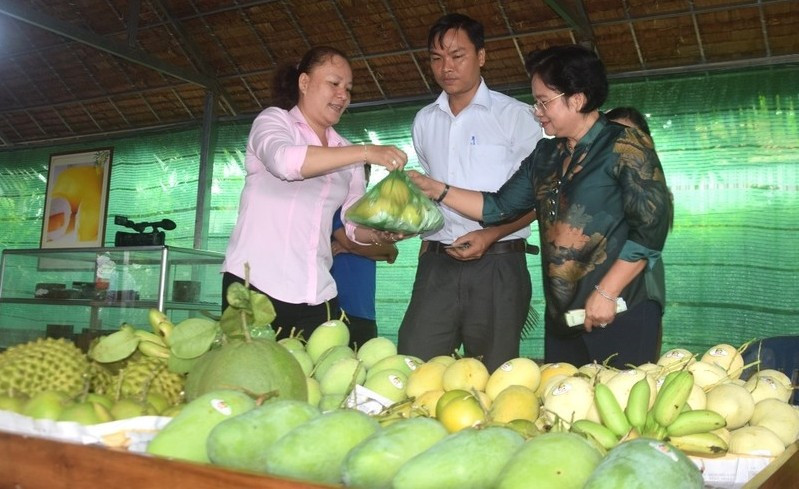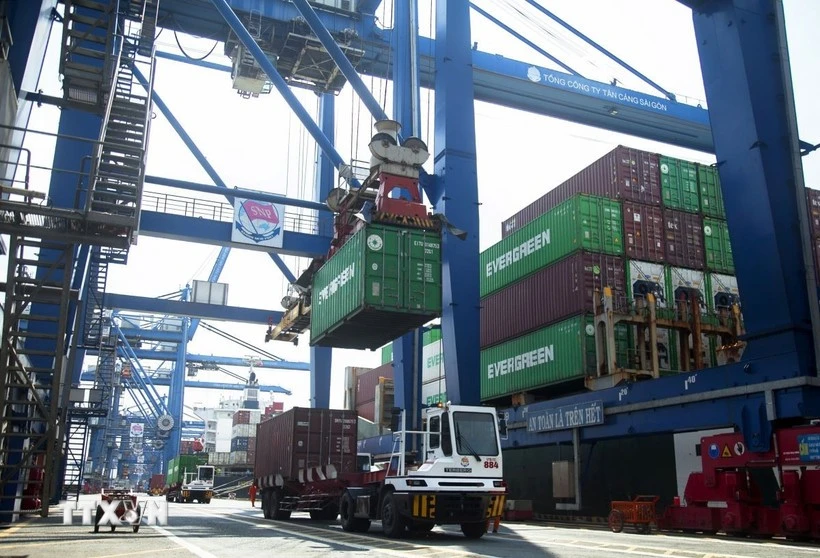Vietnamese fruit and vegetables exported to major markets have expanded well in the first seven months of this year, especially to China, the Republic of Korea (RoK) and Japan.
Plenty of room for export
According to the latest report of the Import and Export Agency under the Ministry of Industry and Trade, China was Vietnam’s leading fruit and vegetable export market with a turnover of 2 billion USD, up 128.5% over the same period in 2022.
The hike in fruit and vegetable exports to the Chinese market contributes to the positive overall growth of the fruit and vegetable industry, with the export value to this market accounting for 64.7% of the total export value of fruits and vegetables.
The US market came in second with an export turnover of 140.5 million USD, down 11.2% from the same period in 2022. It was followed by the RoK with 125.1 million USD, up 13%, and Japan with 105.6 million USD, up 5.5%.
The import demands for fruit and vegetables in the US, RoK, and Japanese markets are huge, but Vietnamese exports only account for a small proportion of the total demand, so there is an enormous room left for businesses.
Specifically, the US had an average import demand for fruit and vegetables of about 46 billion USD per year in the 2018-2022 period, but the import value from Vietnam only accounted for less than 0.6% of the total.
The RoK market posted an average import demand of 3.9 billion USD per year in the 2018-2022 period, however the import value from Vietnam only accounts for 4.3% of the RoK’s total import value.
The Japanese market also reported an average import demand of 10 billion USD per year, but imports from Vietnam only made up 0.6% of the total import value of the country.
Focus on utilising the US market
Notably,there is large room for Vietnamese mangoes to enter the US market. According to data from the US Department of Agriculture (USDA), the US imported 341,400 tonnes of mangoes in the first five months of 2023, worth 492.3 million USD, up 2.6% in volume and 3.4% in value compared to 2022.
The average import price of mangoes and mango products from the US was posted at 1,442.1 USD per tonne, an increase of 0.7% compared to 2022.
Vietnam was the 12th largest supplier of mango and mango products to the US in the first five months of 2023, with increases in both volume and value over the corresponding period of 2022. The price of mangoes imported from Vietnam hit 3,017 USD per tonne, up 32.9% year on year.
However, the proportion of imports from Vietnam remains very low, making up only 0.2% of total mangoes imports into the US in the first five months of 2023.
In the first five months of 2023, the US raised imports of fresh mangoes, reaching 262,300 tonnes, worth 284.9 million USD, up 6.2% in volume and 8.5% in value against the same period in 2022. Fresh mango imports accounted for 76.8% of total imported mangoes and mango products. However, US imports of Vietnamese fresh mangoes occupied only 0.19% of total mango imports.
The geographical distance and difficulties in fruit preservation are the main reasons for modest US imports of fresh mangoes from Vietnam. Meanwhile, the US imports of mango juice from Vietnam advanced from 2.73% in the first five months of 2022 to 5.84% in the first five months of 2023.
Regarding coconuts, in early August, the US Department of Agriculture’s Animal and Plant Health Inspection Service (APHIS) sent a letter to the Vietnam Ministry of Agriculture and Rural Development’s Plant Protection Department noting that its doors are opening for fresh Vietnamese coconuts. This is a great opportunity for local coconut farmers to improve the quality and value of the fruit, contributing to raising the export turnover of this fruit.
















